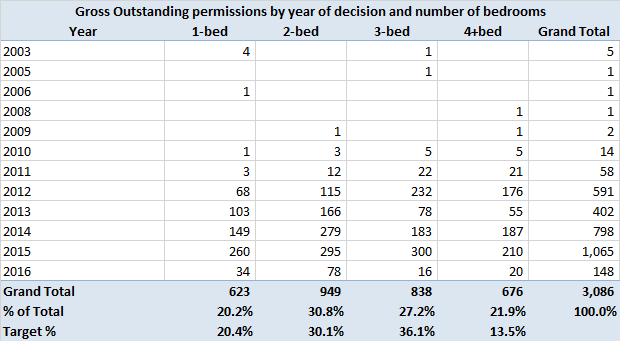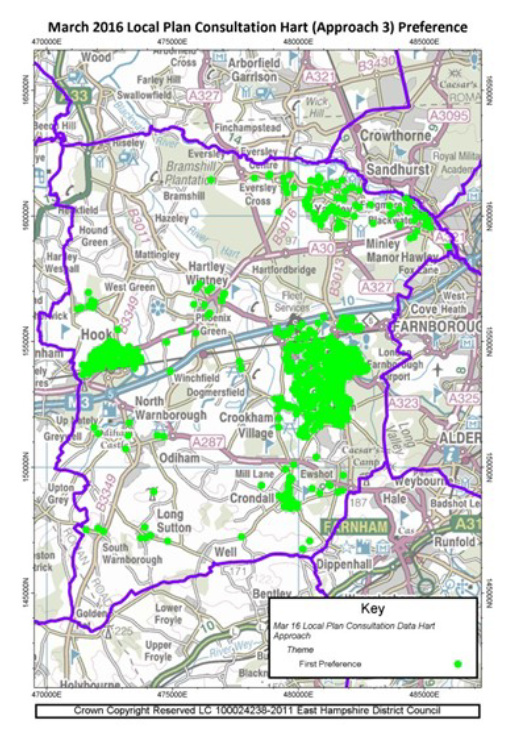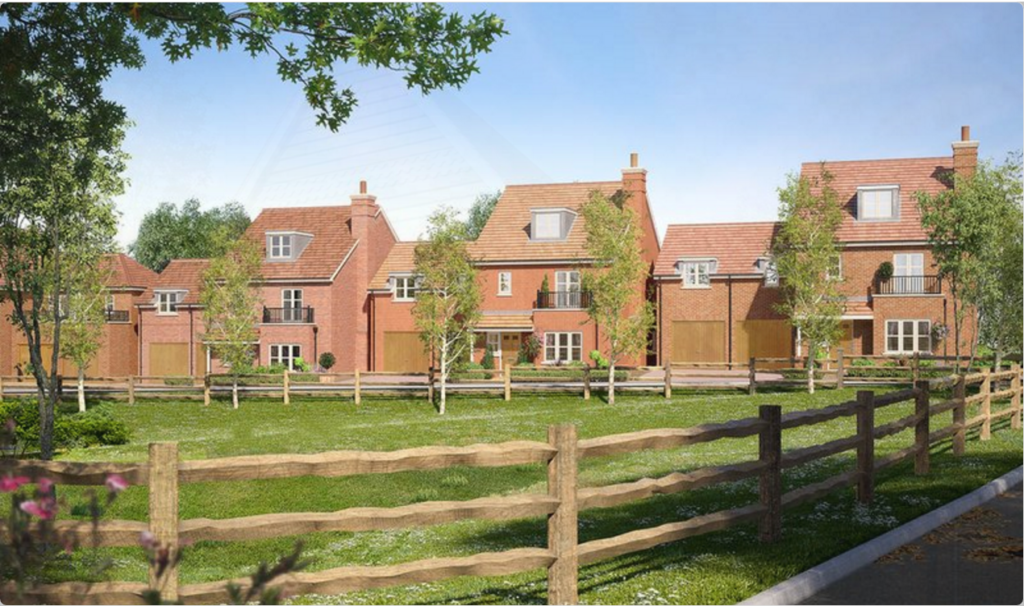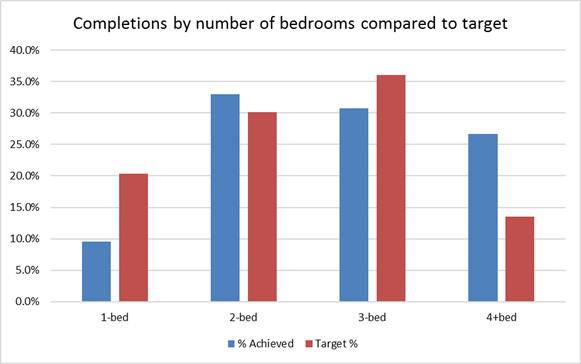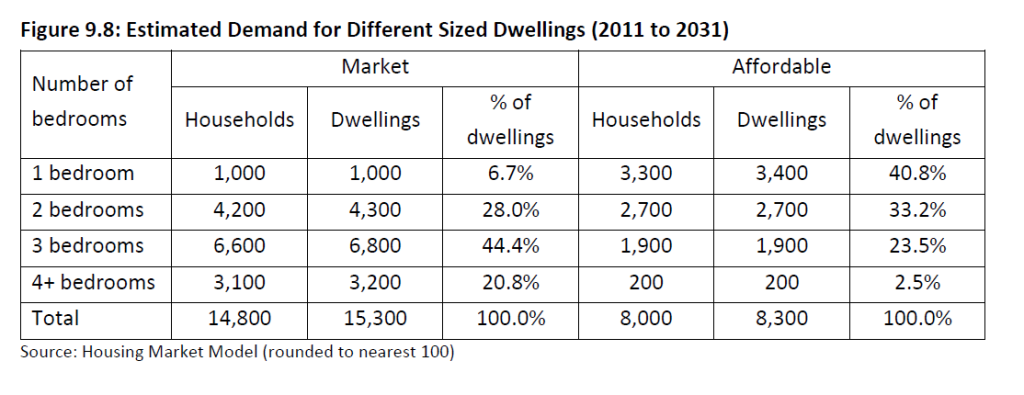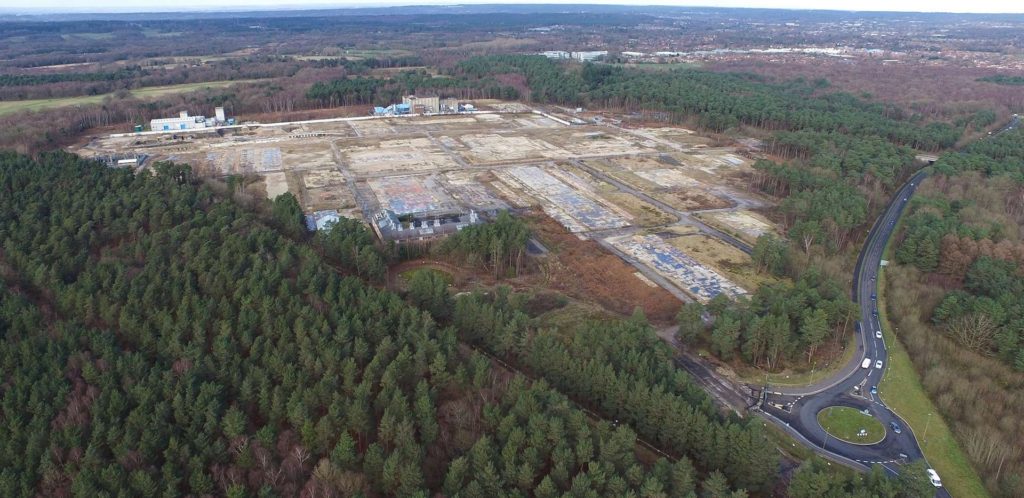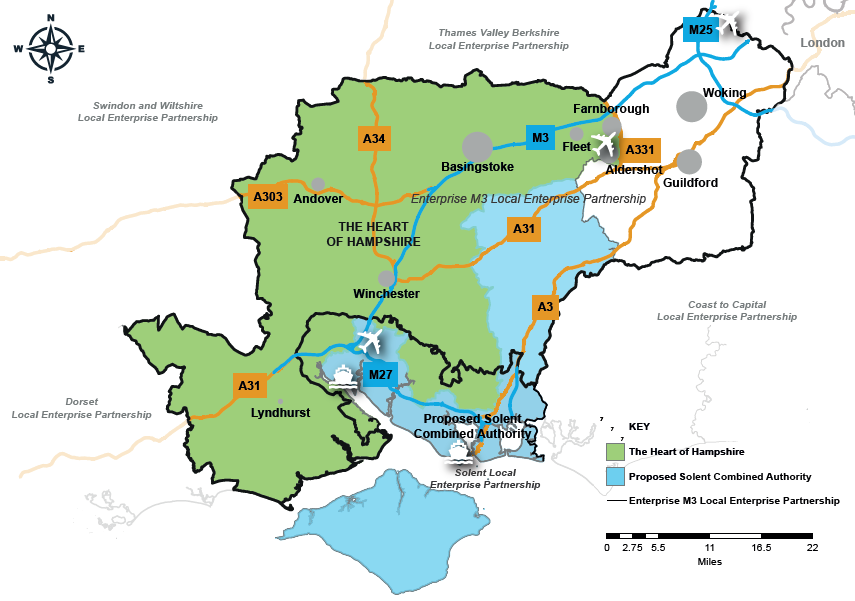
There is a tremendous battle raging over the future of local government in Hampshire. There are competing visions for how Hampshire should be governed being put forward by both Hampshire County Council and the Heart of Hampshire local authorities, with no clear view on what solution will be adopted.
The row started after proposals were submitted to Government by Southampton, Portsmouth, Isle of Wight, Fareham, Gosport, Havant, Eastleigh and East Hampshire for a ‘Solent Combined Authority’. Apparently, discussions on this approach are being progressed with Government.
This leaves open the question of how the rest of Hampshire will be governed. The remaining Hampshire local authorities comprising Basingstoke and Deane, Winchester, Rushmoor, New Forest, and Test Valley, together with the Enterprise M3 Local Enterprise Partnership are exploring the potential for a combined authority and devolution deal with Government, tentatively called ‘The Heart of Hampshire Combined Authority’. Details of these proposals can be found here and here. The benefits of this proposal are claimed to include:
- Responsibility for a multiyear consolidated and devolved local transport budget.
- Powers over strategic planning and housing, including responsibility for creating a spatial planning framework for the Heart of Hampshire, supporting the duty to co-operate requirements, and to chair the Heart of Hampshire Joint Investment and Assets Board.
- The ability to franchise bus services, subject to necessary legislation and local consultation.
- Control of a new additional £30 million a year funding allocation over 30 years, to be invested to the Heart of Hampshire Single Investment Fund, to boost growth.
- Responsibility for developing a Strategic Infrastructure Delivery Plan which will identify the infrastructure needed to support the delivery of new homes and improve transport and broadband connectivity across the area.
- Responsibility for the 19+ Adult Education Budget, which will be devolved from academic year 2018/19
On the one hand, these look like reasonable proposals, however, they appear to simply add a new tier of Government in that Hampshire County Council remains in place with a reduced set of responsibilities and a new elected mayor of the Heart of Hampshire is put in place alongside all of the existing local authorities. This doesn’t appear to create any savings either by reducing the number of senior management posts, consolidating the number of councillors or entering into shared service arrangements to make savings in the back office.
Hampshire County Council (HCC) is fighting back and has produced its own set of options contained in a report by Deloitte.
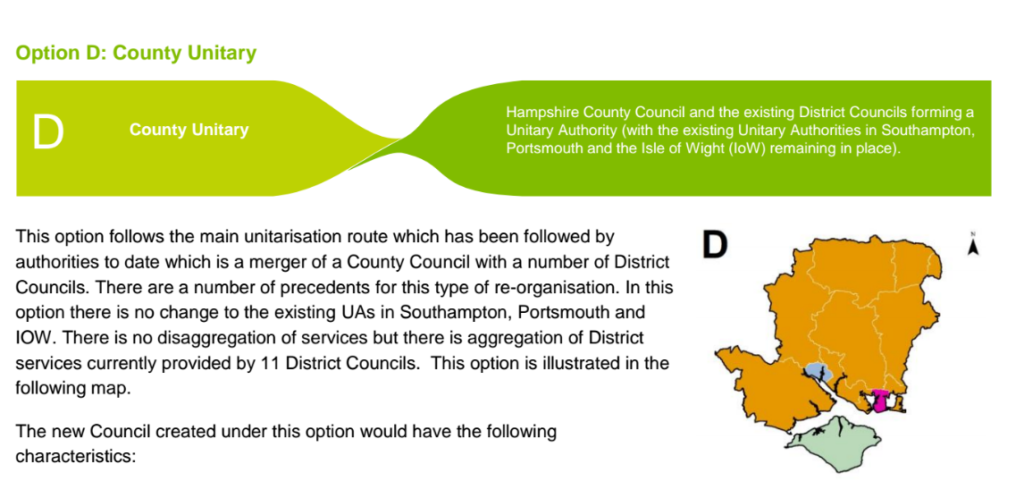
HCC clearly favours an option where the remaining authorities are consolidated into a giant unitary county authority, with the existing unitary authorities of Portsmouth, Southampton and the Isle of Wight (IoW) remaining in place. It is said this option generates £389.6m of net savings over a 10 year period from a reduction in senior management positions, reducing the number of councillors, reducing corporate services, optimising service delivery and savings in property costs. These proposals would effectively mean the abolition of most of the existing local authorities. These proposals do not apparently include a new mayor and so would miss out on the additional central Government funding on offer for new combined authorities.
Again, these proposals have some merit, but such a large county structure may effectively disenfranchise large numbers of voters and make it more difficult effectively to hold the new council to account.
A further option of 4 unitary councils (Option G) is also considered appears to have more accountability with centres of local Government closer to the people and this option generates net savings of £250.5m over 10 years.
HCC does not endorse the Solent and Heart of Hampshire proposals and the leaders of the Hampshire boroughs are ‘disappointed’ that HCC have pressed ahead with the Deloitte report without informing or consulting them.
It is clear there is a massive bunfight going on and it is difficult to see how these competing ideas will play out. However, HCC is calling for wide consultation across the county on how we should be governed. It might be a good idea to try and take the best of each of the competing ideas, by adopting the Option G approach in the HCC report and moving to “combined authorities” with elected mayors and financial benefits from Government. The new combined authorities may even be able to share back office functions and make even greater savings.
We will keep you updated as we learn more, particularly if we can see how it will impact the Hart Local Plan.

